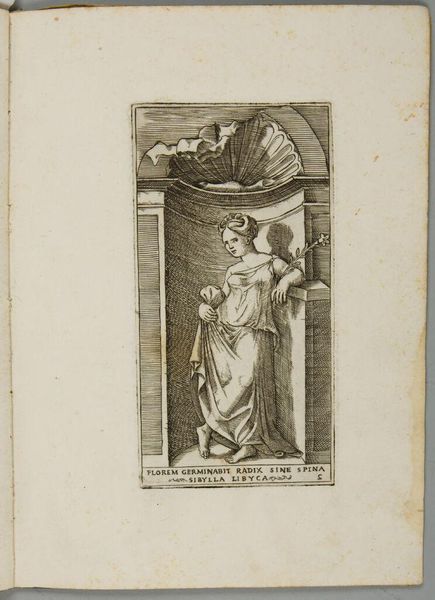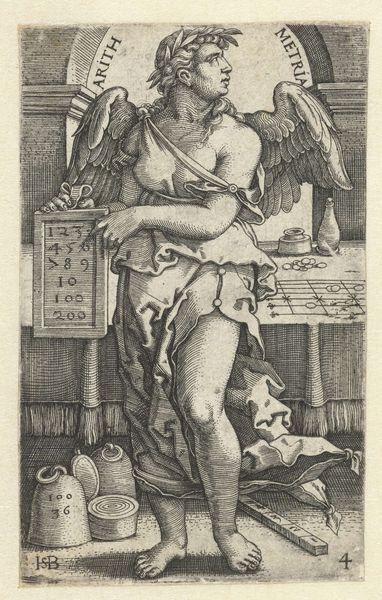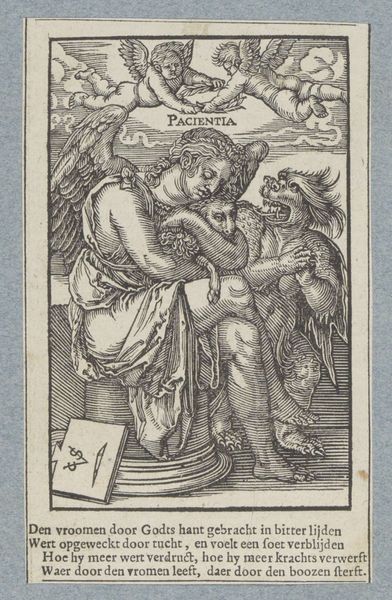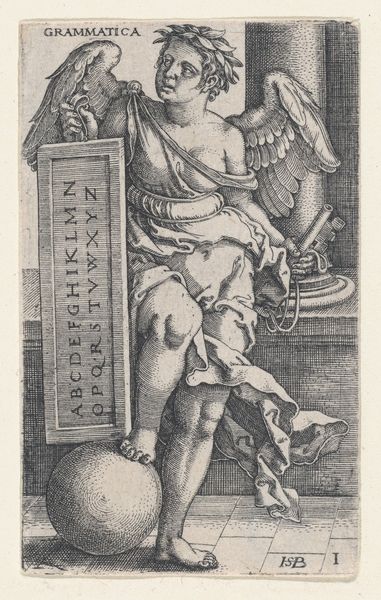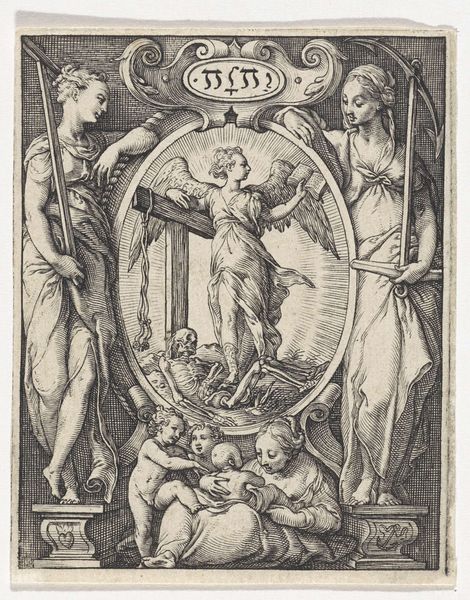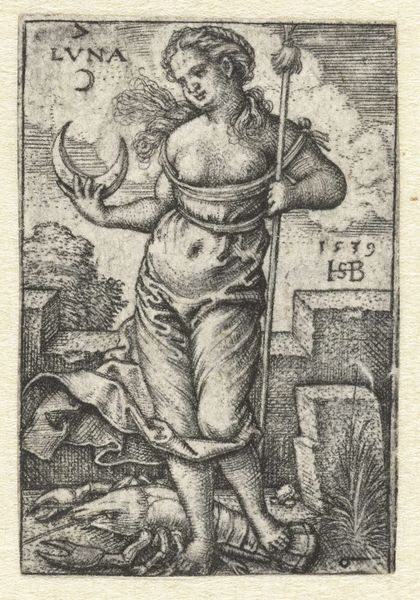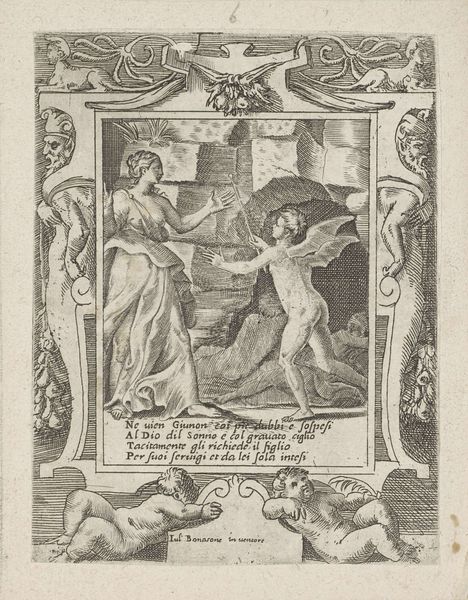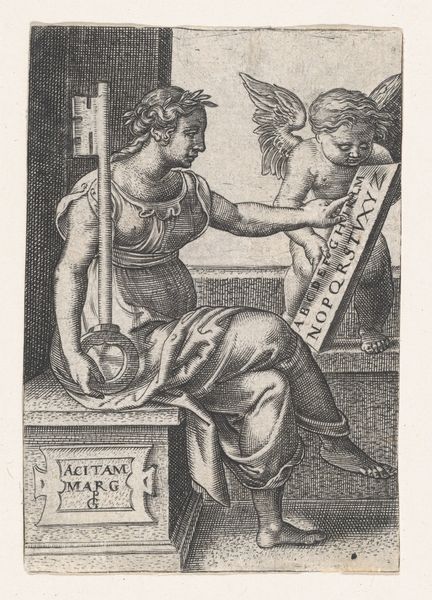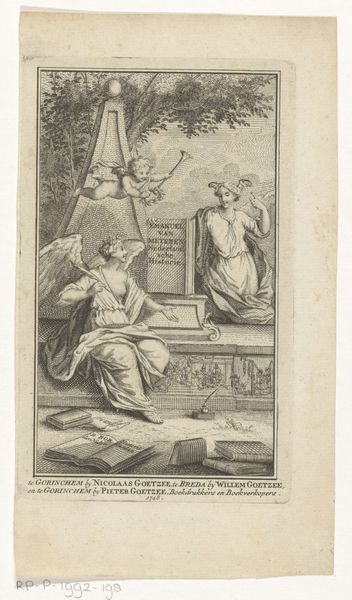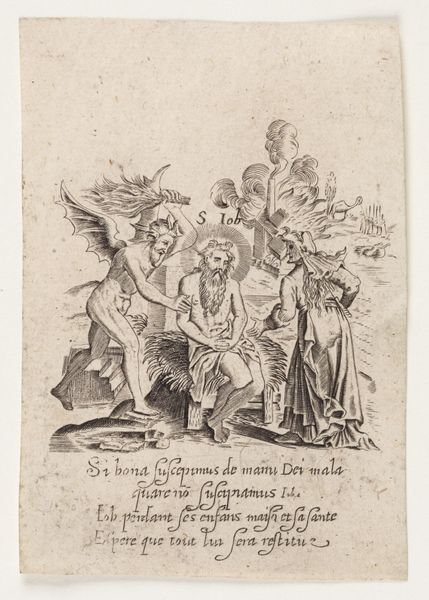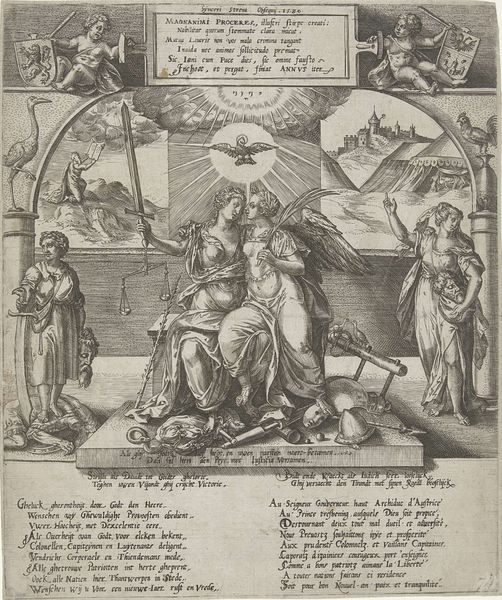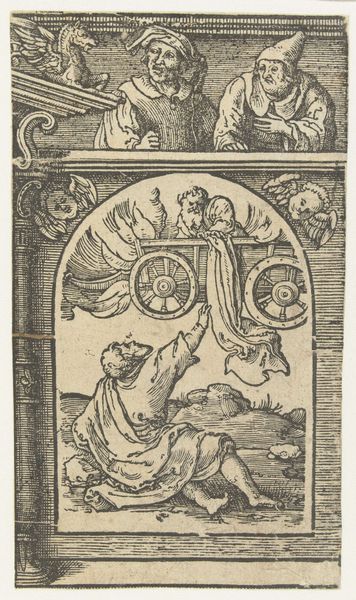
drawing, coloured-pencil, pencil
#
drawing
#
coloured-pencil
#
allegory
#
pencil sketch
#
figuration
#
coloured pencil
#
pencil
#
symbolism
#
watercolour illustration
#
watercolor
Copyright: Public Domain: Artvee
Curator: Looking at Elihu Vedder's "The Heavenly Potter" created around 1883-1884, what strikes you immediately? It’s rendered in colored pencil and pencil. Editor: There’s something profoundly melancholic about the palette, that pervasive grayness. It's almost like looking at a faded photograph. I am instantly thinking of power and the shaping of beings and our very identities by power structures. Curator: Vedder was very invested in the craft of illustration, note the attention to the materiality of the different elements – clay, stone, tools. His engagement with different artistic communities during this time is also very apparent. Editor: Yes, and situated within the late 19th-century Symbolist movement, this artwork certainly opens avenues for thinking about divine authority in how it’s composed here. It's also reminiscent of earlier allegories involving Prometheus creating the first human from clay. It reflects ideas about creativity and power structures in society. The verse and accompanying imagery both invoke themes about our creation and relationship with labor. Curator: The tools, too, play a role. The placement of the urn and spade at the bottom suggest processes. And the writing incorporated acts as text/image component. Editor: Absolutely, it's intriguing how Vedder intertwines image and text. He layers meanings about divine creation, social power, and material existence. We also see some ideas relating to consumption, given his reference to cups and earth. Curator: Vedder was clearly invested in the spiritual and the everyday. This is evident in his rendering style, but the muted palette subverts what we know of divinity and power. Editor: Indeed. And while this may allude to humanity's origins, it also presents some potent commentary on social strata. I am thinking of hierarchies of production in industrializing societies. Curator: A potent intersection indeed between craft and higher philosophical themes, isn't it? Editor: Precisely! It's an exploration of the complex interdependencies between spiritual narratives, material culture, and identity in ways that reverberate today.
Comments
No comments
Be the first to comment and join the conversation on the ultimate creative platform.

